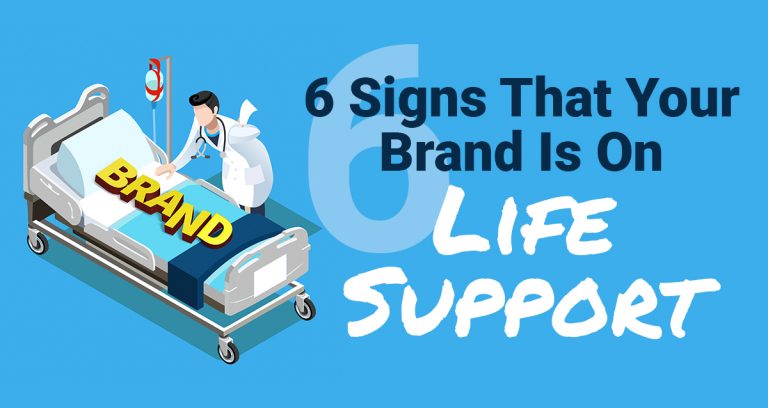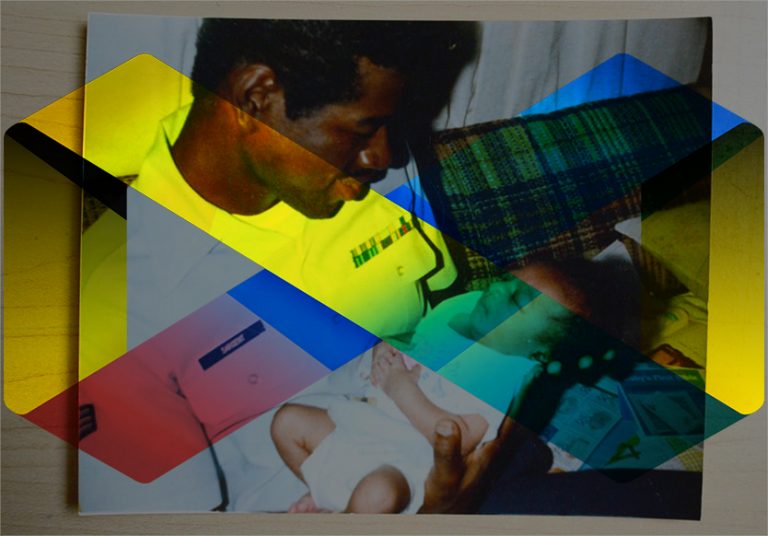1. You feel behind-the-times because of an outdated, under-performing website, logo or marketing material
This is the most common thing we hear from people who is frustrated with their brand or website. Here’s the punchline: your brand is not like a crock pot–you can’t set it and forget it. It takes consistent work to make sure it is fresh, up-to-date and competitive. As your business grows, your visual brand should grow as well by updating your website, social media graphics, videos, colors, fonts and even your logo. As a general rule of thumb, we recommend a website refresh or redesign every 2 years; every business is unique but that’s about how often major design trends and technology emerges on the market (sometimes faster).
To be a leader or influencer in your industry or to even make real money, your business and brand must be fresh, current and high-performing. That also goes for your internal documents and operational processes.
If you’re feeling behind-the-times, take a step back and re-imagine your brand’s look and feel, redesign your website and possibly redesign your company logo. How drastic your change needs to be depends on your unique situation. Schedule a risk-free discovery call with us and let’s elevate your brand together.
2. You struggle with knowing who to trust after investing your time and money on a previous website or project
Have you ever spent money on something business-related but was still unhappy and left empty-handed afterwards? Believe it or not, it happens all of the time. We work with quite a few people who previously spent money on their brand or website and was eventually abandoned and unsatisfied. Those experiences left them unhappy, distrusting and skeptic to work with anyone else in the future. If you’ve had a similar experience, allow me to personally apologize on behalf of all the professionals with integrity in this industry. We are not all the same.
The solution to your distrust is to avoid hiring hobbyists to design your brand or website, and to think twice and do research before you hire anyone.
Professional web and branding companies or agencies will have the experience to understand your vision and the skills and process to bring it to life. They won’t abandon you in the middle of the process because they value their reputation; that’s really all we have in this industry. Also, be sure to do your due-diligence and research the company before you hire them. Ask for testimonials, case studies, solution briefs and examples of their work prior to signing the contract. You can read our client testimonials and case studies here on our website. We even have pdf versions you can download.
If you’d like to know exactly what goes into getting a website designed, plus a free download and our expert insider advice, read our article Web Design Process Explained: 12 Steps to Get Your Website Design and Launched. This ultimate, unbiased guide will tell you everything you need to know.
3. You struggle to close deals, get booked and sell more due to an inefficient sales cycle
First of all, do you have a sales cycle in place? I ask because if you’re a startup, you may fall into the majority who don’t have a polished sales cycle. Believe it or not but many entrepreneurs are completely oblivious as to what a sales cycle is. Basically, a sales cycle the entire process of a business deal from Lead to Close, with multiple steps in between. If your company is more mature, then most likely you know what a sales cycle is and have one it in place.
If you don’t have a sales cycle in place, or need to revamp it, I strongly advise you to do so because sales acceleration and efficiency is crucial to the growth of your business. Many people over-complicate the sales cycle but it’s very simple to understand. Simply identify and outline your specific process of closing new business deals, whether that be a service agreement if you’re a B2B company, public speaking engagement if you’re a speaker or a wholesale book order if you’re an author. No two sales cycles are the same.
We use HubSpot’s free sales and marketing automation tools, which includes a built-in deals management system and boiler plate sales cycle. Ours sales cycle in HubSpot is as follows:
- Qualify Lead – A lead is pre-qualified based on marketing activity such as a download or contact form completion
- Discovery Call or Sales Presentation – A call is scheduled to discuss the client’s needs and goals
- Follow-up Email – An email goes to the potential client to recap the conversation, along with some type of pdf asset (preliminary proposal, solution brief or case study)
- Proposal – Official proposal is sent, which includes the contract
- Negotiation – (optional) Phone call to discuss budget, pricing, and contract terms
- Contract – Official signing of the contract by client and us
- Invoice – Invoice sent out to receive first payment
- Closed Won – Deals moves to Close Won if we won the contract
- OR Closed Lost – Deal moves to Closed Lost if we didn’t get the business for whatever reason.
If you struggle with deals being stalled in the pipeline, you may need to rethink your sales cycle and your approach to execution. Use branding assets like case studies, solutions briefs, blog posts and white papers to help push deals through. As you send these resources to the potential client during the sales process, perhaps as a follow up to your discovery call or included in the proposal or contract, it instills a deeper level of confidence in the customer and increases the perceived value of your service offering and ultimately your company.
Along with refining your sales cycle, deploying brand consistency is another way powerful way to push deals through the pipeline, sell more and get booked more often.
4. You don’t know how to reinvent yourself after leaving a job or changing careers
It’s very common to change careers or leave a job to start a business. If you’re in this season, I commend you because it requires a lot of guts and passion to take that risk.
In my Branding 101 online course, there are essentially 4 steps/phases to creating and launching a personal brand:
Phase I: Establish Your Brand – This is all about establishing who you want to be as a personal brand or business owner and identifying your gift, strengths, weaknesses and skills so that you can use them as leverage to succeed.
Phase II: Map Out Your Brand – This is about laying the foundation to your actual brand, writing your positioning statement, brand message, defining your target audience, writing an elevator pitch and more. Map out how you will position yourself in the marketplace, then execute.
Phase III: Create Your Brand – This is where you bring your brand to life by creating the visual identity such as your logo, photos, website, videos and social media. Basically, you’re putting a face to your business.
Phase IV: Launch Your Brand – This is where it all comes together, and you take your business/brand from idea to reality. In this phase you’ll map out a specific action plan to launch your brand and share the new you with the world.
If you don’t know how to reinvent yourself and don’t know what the next step is, I strongly encourage you to enroll in the Branding 101 online course. It has 20 in-depth training videos, a workbook and 1-on-1 access to get coached along the way. It provides an easy-to-follow process that will help you reinvent yourself and start your business in 90 days or less.
5. You have trouble explaining or communicating your service, product or business to others
The problem is not that you lack expertise, knowledge or experience–you simply don’t know how to present and communicate that in the most effective way. This is a very common challenge that handicaps a lot of people. Understanding the link between branding and marketing is the bridge to overcome it. Allow me to break it down for you.
The 4th P in the 4 Ps of Branding is PRESENTATION. How you present yourself is absolutely crucial to your success because how your brand is represented in the marketplace is the way the marketplace will perceive you. Marketing is all about VALUE and PERCEPTION. Value being something of interest to your audience, and perception being the visual things that people can see, hear, touch, and smell.
Let’s look at it this way: consistency over time equals branding. Therefore, if you consistently market yourself as “Mike the Milkshake King” long enough, people will believe you. However, you can’t simply SAY you’re the milkshake king–you must actually back it up by giving your audience what they want (VALUE) in the form of visual aids and collateral (PERCEPTION). This is the bridge of synergy between branding and marketing. You are in total control of what people see and know about your brand, therefore you have the power to tailor your brand experience and conversation to what will first benefit your audience, then you. When you understand that link, it becomes much easier to communicate with people about what you do.
Public speaking is one of the biggest fears for most people. Even networking events can be a challenging experience for some. But, knowing what to say and how to say it will help you be more confident in your ability to converse and market yourself.
Having an elevator pitch is a great way to shake off those gitters. Write your elevator pitch and learn it inside out, front to back, left to right. The more you say it (aloud) the more comfortable and confident you’ll get with explaining and communicating your value.
In Module 2 of my online course Brand Building 101, there are multiple exercises to help you develop your brand message, crafty your brand story, and simple formulas to write your elevator pitch and positioning statement. This course is perfect for public figures, startups, and solo entrepreneurs. Click here to learn more.
6. You struggle to market yourself among competitors and the sea of speakers, authors, and personal brands
I was watching an interview of Steve Jobs once and he said, “Don’t ask how you can be better than your competition; ask how you can be different.” In my experience, having the best product or service doesn’t always win the day, the deal, or the sale. It’s all about you present your “X factor”, which is the thing you do the absolute best with the least amount of effort–that is what stands out in the end because it allows you to showcase your differentiation (or USP).
If you can present yourself or business in a way that’s unique from your competitors, you’ll win. And, the way to do that is to highlight what makes your unique, i.e. your story, experiences and value propositions. Identity your X factor, embrace it and run with it—it’s worth more than any marketing gimmick, advertisement or press release.
Remember, no one can do what you do, the way you do it. You are truly one of a kind.


